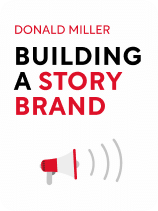

This article is an excerpt from the Shortform book guide to "Building a Storybrand" by Donald Miller. Shortform has the world's best summaries and analyses of books you should be reading.
Like this article? Sign up for a free trial here .
What is a brand character? How can developing a brand character help you build a storybrand?
A brand character is the “hero” of your story. In terms of building your storybrand, the brand character or hero is the customer. You should think of them as a fully developed person, who you build your story around.
Read more about how to develop a brand character.
Brand Character: Your Customer Has to Want Something
The first of the seven story elements is a hero who wants something. In a narrative, the hero is the main character and the center of attention.
In branding, the hero is the customer (not your brand) and you need to come up with something she wants that’s survival-related and associated with your product. (Shortform example: If you sell hand soap, you can suggest the customer wants clean hands, which is related to survival because clean hands help prevent illness.)
First, we’ll discuss why wants are so compelling and how to choose them. Then, we’ll discuss how to write these wants into your brandscript.
Story Gaps
The distance between the brand character and what she wants is called a story gap. Story gaps are inherently interesting because the human brain craves resolution. For example, try singing “Happy Birthday” but leaving off the last note—it’ll drive you crazy.
The goal of element 1 is to open a story gap to hook your customer’s attention. The gap will stay open, maintaining your customers’ attention, until the story ends.
Keep It Simple
Even if your product satisfies several wants, focus on only one. Otherwise, you risk being confusing, overloading the customer’s brain, and having her turn to a different company.
- (Shortform story example: Imagine if, in the movie Sleeping Beauty, in addition to rescuing the princess, the prince also wanted to start a business, go to college, release a hit single, and save the whales.) If there’s too much going on, it becomes too much work for the brain to organize, and it gives up.
- (Shortform brand example: Imagine if a brand that sold dishwashers told customers that the appliance would not only clean their dishes, but could be used to cook a meal, increase the value of their home, and save their marriage.)
Different levels of the company can focus on different wants. Start by choosing a desire for your whole brand, which must be relevant and simple. Then, each division or product can have its own desire. These lower desires are like subplots—surprises and bonuses within something they already liked.
- (Shortform example: If your company offers both book and corporate editing services, the overall desire could be the need for final, clean content. The book customer might desire novels with interesting plots, while the corporate customer might desire clear, engaging website copy.)
Writing Your BrandScript
To write your brandscript:
- Create an online StoryBrand BrandScript (requires you to create an account) or create your own on a blank sheet of paper. To create your own, first, divide the sheet into eight sections. You’ll use seven of these for the SB7 Framework elements and the last for an exercise in Chapter 9. Then, label the sections as follows:
| 1. HeroThe hero wants: ____ ↓ | 3. Guide Evidence of empathy: ____ Evidence of competence: ____ ↓ | 5. Call to ActionDirect: ____ Transitional: ____ ↓ | 7. Positive stakesTop positive stakes: ____ |
| 2. ProblemsVillains:____External problems: ____Internal problems: ____Philosophical problems: ____↗ | 4. PlanProcess plan: ____ Agreement plan: ____↗ | 6. Negative stakesTop three negative stakes: ____ ↗ | Aspirational identityFrom: ____ To: ____ |
- Brainstorm what your brand offers and how you can translate this into customer desires.
- Write the top wants on your script or sheet of paper.
Now that you have a brand character and a hero in your story, you can work on the next phase of writing your storybrand.

———End of Preview———
Like what you just read? Read the rest of the world's best book summary and analysis of Donald Miller's "Building a Storybrand" at Shortform .
Here's what you'll find in our full Building a Storybrand summary :
- How storytelling enhances brand marketing
- Why you should make the consumer the hero of your brand's story
- The 7 elements that make marketing work






